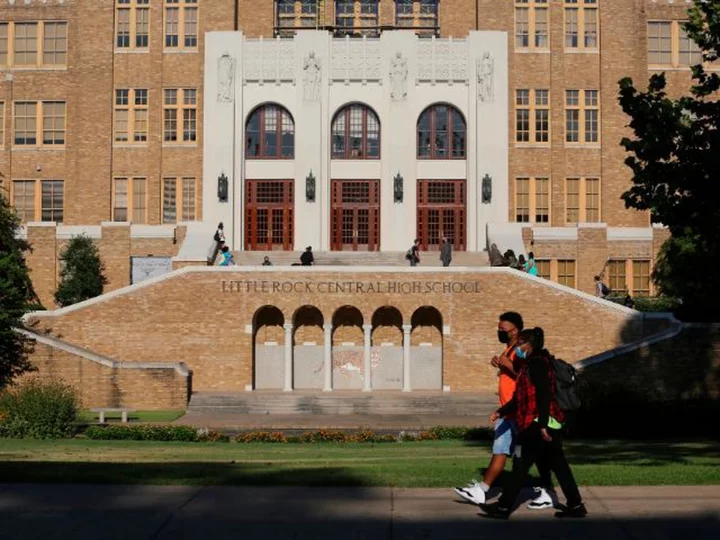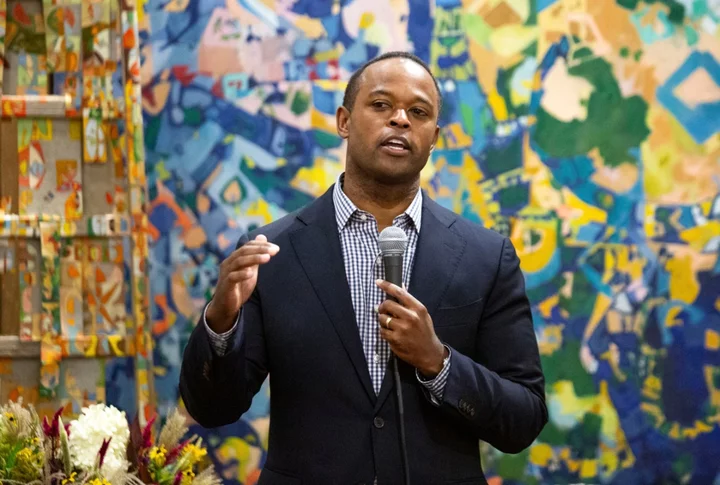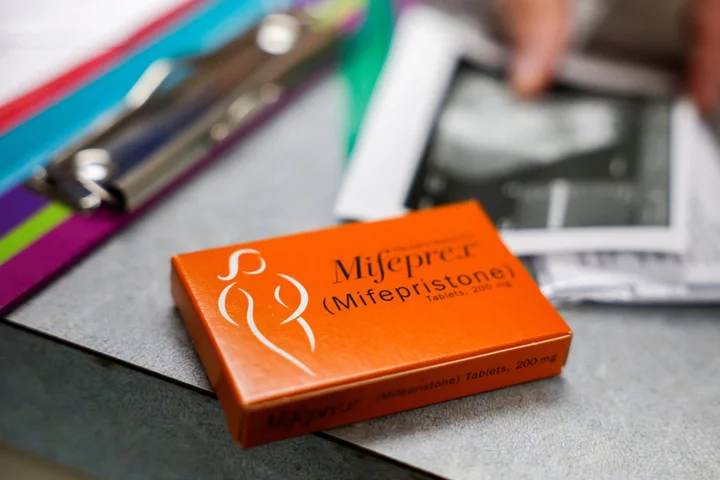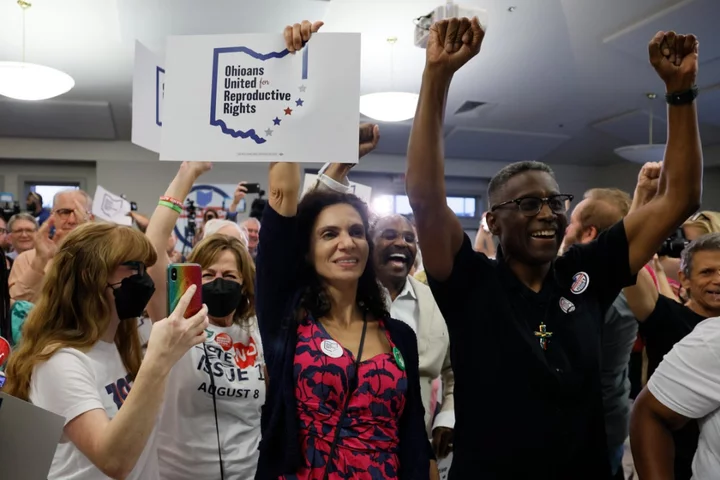
Rachel Morin update: Desperate hunt for mystery suspect after DNA linked to LA assault found
Rachel Morin’s boyfriend has spoken out after Maryland Police revealed footage of the man believed to have murdered the mother-of-five. The Harford County Sheriff’s Office announced on Thursday that DNA found at the scene of Morin’s murder had been matched to the DNA left at a home were an unknown man broke into a home in Los Angeles and violently attacked a young girl back in March. The suspect, a Hispanic male aged 20-30, was caught on a home security camera leaving the LA home. “We believe this was a person that Rachel didn’t know, potentially a random act of violence,” Harford County Sheriff’s Office’s Colonel William Davis said on Thursday. Police are now asking for the public’s help in identifying him. “Unfortunately that suspect has not been positively identified, but he did leave behind his DNA,” Colonel William Davis said at a press conference. Morin’s boyfriend Richard Tobin took to social media following the briefing to say: “I hope they found this scum of the earth, justice for Rachel.” The break in the investigation comes nearly two weeks after Morin, 37, was last seen heading to the Ma & Pa Trail in Bel Air at around 6pm on 5 August. Her body was found near the trail the next day. Read More Maryland police have DNA matching Rachel Morin murder suspect and video images but no identity Rachel Morin’s mother breaks silence on daughter’s killing Maryland sheriff calls out ‘heinous coward’ who killed mother-of-five Rachel Morin Rachel Morin’s boyfriend speaks out after police name man wanted over sex assault as suspect in murder
2023-08-18 21:58

Little Rock schools will allow African American class to count for graduation, in break from Arkansas state officials
In a sharp break from Arkansas education officials, the Little Rock School District said in a news release it will offer AP African American Studies for credit.
2023-08-18 20:24

This CNN Hero's battle with cancer inspired her lifesaving work helping families in her Native American community
After navigating the daunting challenges to access the treatment she needed, Tescha Hawley started the Day Eagle Hope Project to help other Native American cancer patients. Today, her organization is addressing gaps in health care and nutrition for thousands on her reservation.
2023-08-18 19:23

Maryland police have DNA matching Rachel Morin murder suspect and video images but no identity
The Harford County Sheriff’s Office announced on Thursday they have used DNA evidence to identify a potential suspect in the murder of Maryland woman Rachel Morin earlier this month. Colonel William Davis said DNA found at the scene of Morin’s death was analysed by state police, turning up a match with DNA found at the scene of a March home invasion in Los Angeles where a young girl was attacked. “Unfortunately that suspect has not been positively identified, but he did leave behind his DNA,” Colonel Davis said. “Based on the DNA evidence, we consider the individual in the video we received from the Los Angeles Police Department to be the person that murdered Rachel Morin on August 5.” The individual, a shirtless man thought to be in his 20s, was recorded leaving the LA crime scene on a home security camera. The deputy added that despite the match, police still “don’t have a clue where he could be.” “In March he was in California, and here in August he was in Maryland,” the officer said. This is a breaking news story and will be updated with new information.
2023-08-18 08:16

America's richest 10% are responsible for 40% of its planet-heating pollution, new report finds
America's wealthiest people are also some of the world's biggest polluters -- not only because of their massive homes and private jets, but because of the fossil fuels generated by the companies they invest their money in.
2023-08-18 02:24

Kentucky gubernatorial rivals Andy Beshear and Daniel Cameron offer competing education plans
Democratic Gov. Andy Beshear proposed awarding the largest pay raise in decades to Kentucky's public school personnel, upping the ante Wednesday in his competition with Republican challenger Daniel Cameron, who offered his own plan to boost salaries and overcome pandemic learning setbacks. The rivals in the November election outlined ideas for boosting K-12 education on back-to-back days, staking out positions on an overarching issue. Their gubernatorial showdown is one of the nation's most closely watched this year as the Democratic incumbent tries to win reelection in the red state. Beshear garnered strong support from teachers in winning the governorship in 2019, naming an educator as his running mate and vowing to make education his top priority. Cameron is trying to make inroads, having apologized for an ex-GOP governor's feud with educators and unveiling a plan to boost starting teacher pay and develop tutoring programs for students who fell behind during the pandemic. Beshear countered Wednesday with his own plan highlighted by an 11% pay raise for teachers and all school personnel, including bus drivers, janitors and cafeteria staff. It would amount to the single largest raise for Kentucky public school educators in at least 40 years, the governor said. “You can’t catch a kid up on math without a math teacher, and we cannot remain competitive with other states if we don’t pay teachers closer to what they’re worth,” the governor said at a news conference. The governor said his plan would fully fund student transportation. He said that funding, along with the pay raise, would help avoid problems like what occurred in Louisville's district, where schools closed for more than a week after a redesign of bus routes resulted in long delays on the first day of classes. Beshear's plan was in the works long before Cameron unveiled his proposals Tuesday, the governor's office said. Kentucky ranks 44th nationally in average teacher starting pay and 40th in average teacher pay, Beshear said, citing statistics from the National Education Association. An 11% raise — a $1.1 billion expense over two years — would vault Kentucky to the middle of the pack. With a record budget surplus and strong economy, the governor's proposals are affordable with “plenty of space” to meet other demands, State Budget Director John Hicks said. On Tuesday, Cameron proposed setting the statewide base starting pay for new teachers at $41,500. That would have a ripple effect by lifting pay for other teachers, he said. “What our plan entails is making sure that we get every county in our commonwealth up to that number, so we can ensure that our teachers are in a position to take care of themselves and be confident in the classroom as they work with our students,” Cameron said. Beshear said the average teacher starting salary in Kentucky is $38,010, based on NEA statistics. He said his proposal would raise that to $42,191. The governor pledged to continue pushing for state-funded pre-K for all 4-year-olds if he wins a second term. The proposal made no headway previously in the Republican-dominated legislature. Beshear said his plan includes fully funding teachers’ pensions and medical benefits to ensure there's no increase in health insurance premiums for school employees. A key part of Cameron's plan would develop an optional, 16-week tutoring program for math and reading instruction. Students falling behind grade level would get first priority, he said. The proposal mirrors initiatives already started by some school districts. It's a response to statewide test scores last fall that showed fewer than half of students were reading at grade level. Lower across-the-board scores were posted in math, science and social studies. National test scores showed it’s a problem across the U.S. as schools try to recover from the pandemic. Cameron blames Beshear for learning setbacks during the pandemic, when schools shifted to virtual learning, saying it put many students at risk of losing “their God-given potential.” The governor supported school closures during the height of the pandemic to protect people from the virus. He prioritized vaccinating teachers to get schools reopened and says his policies reflected recommendations from then-President Donald Trump's coronavirus task force. Kentucky lawmakers have generally followed their own course in setting education policies. The two-year budget passed last year funded full-day kindergarten and poured money into teacher pensions and infrastructure. They increased the state’s main funding formula for K-12 schools, but the amount was considerably less than what Beshear proposed. The governor chided lawmakers Wednesday for “shorting” districts in allocations for school transportation. “If you want to solve transportation issues, then we need to pay bus drivers enough,” Beshear said. Read More Ukraine war’s heaviest fight rages in east - follow live Charity boss speaks out over ‘traumatic’ encounter with royal aide Kentucky governor's efforts to help storm-ravaged towns may dilute GOP advantage in rural areas Kentucky candidates trade barbs at Fancy Farm picnic, the state's premier political event McConnell is warmly embraced by Kentucky Republicans amid questions about his health
2023-08-17 04:57

Abortion drug case likely headed to Supreme Court after Republican-appointed judges agree to restrict access
A high-stakes lawsuit over the future of a widely used abortion drug is likely heading to the US Supreme Court, set to determine the fate of abortion rights access across the country for a second time within two years. Three Republican-appointed judges on a federal appeals court have determined that the federal government did not follow proper procedures when it amended regulations for a commonly used medication abortion drug in 2016. But the restrictions will not immediately take effect. The panel partially upheld a ruling from a Donald Trump-appointed federal judge in Texas, whose sweeping decision earlier this year threatened to strip access to the drug altogether. Nothing in the ruling from a three-judge panel on 16 August will go into effect until the nation’s highest court weighs in. Wednesday’s ruling argues that the US Food and Drug Administration unlawfully expanded access to mifepristone, which was first approved by the federal government more than 20 years ago. Mifepristone was first approved by the FDA in 2000 and is approved for use up to 10 weeks of pregnancy. A vast majority of abortions occur within the first nine weeks of pregnancy. From 2019 through 2020, nearly 93 per cent of all abortions were performed before the 13th week, according to the US Centers for Disease Control and Prevention. The drug – part of a two-drug protocol for medication abortions, the most common form of abortion care in the US – is the subject of a lawsuit from a group of anti-abortion activists represented by right-wing Christian legal group Alliance Defending Freedom, which joined efforts to overturn Roe v Wade at the Supreme Court last year. In April, US District Judge Matthew Kacsmaryk – a former right-wing activist lawyer who was appointed to the federal judiciary by Mr Trump – issued a ruling to suspend the FDA’s approval, which was immediately challenged by abortion rights advocates, providers, major medical groups, drug manufacturers and President Joe Biden’s administration. An initial ruling at the US Court of Appeals for the Fifth Circuit blocked part of that decision but struck down policies for mail-in prescriptions and rules that expanded the drug’s approval for pregnancies up to 10 weeks. On 21 April, the Supreme Court blocked the lower courts’ rulings from taking effect while the case plays out, retaining the status quo while the legal case plays out. Following the Supreme Court’s conservative supermajority decision to revoke a constitutional right to abortion care in Dobbs v Jackson Women’s Health Organization, at least 15 states – mostly across the US South – have effectively banned most abortions and imposed criminal penalties against providers. Abortion rights advocates and providers have warned that eliminating or restricting access to mifepristone could drastically impact an already-fragile landscape for abortion care. A ruling that undermines the FDA’s drug approval process could also open the door for other activist-driven legal battles over other drugs wrapped up in political debates, potentially inviting other destabilising lawsuits to Covid-19 vaccines, contraception, HIV medication, gender-affirming care, and other life-saving drugs. Read More What is mifepristone? The widely used pill in the abortion rights battle at the Supreme Court Abortion rights advocates win major victory in Ohio as voters reject GOP plan to thwart ballot measure Texas women detailed agonising pregnancies after being denied abortions. The state blames doctors Some abortion drug restrictions upheld by in a case bound for Supreme Court Akram criticizes Pakistan Cricket Board for leaving Imran Khan out of Independence Day video Netanyahu voices support for Israel's military after his allies and son lambaste security officials
2023-08-17 04:19

BHP, South32 May Face South Africa Class Action on Lung Disease
BHP Group Ltd., South32 Ltd. and a unit of Seriti Resources Holdings Ltd. may face a class action
2023-08-16 16:46

Activists Sue South Africa’s Environment Authorities Over Arcelor Pollution
South Africa’s environment minister and the national air quality officer have been sued by environmental activists for allegedly
2023-08-16 00:49

GOP senator amplifies conspiracy theory that Covid was ‘pre-planned’ by ‘elite’ in anti-vaccine rant on Fox
Republican Senator Ron Johnson amplified a number of Covid-19 conspiracy theories in a Fox Business Network segment bloated with false claims about the disease amid a growing number of hospitalisations and infections. While public health officials are urging Americans to stay up to date with vaccinations, the Wisconsin senator and Fox personality Maria Bartiromo falsely refuted vaccine efficacy and safety while wrongly stating that ivermectin is an approved treatment. The senator also revived baseless conspiracy theories circulated by anti-vaccine influencers like Robert F Kennedy Jr, who has faced ongoing scrutiny for his bogus suggestion that the virus is a biological weapon used to target certain demographics and spare Jewish and Chinese people. “This was all pre-planned by an elite group of people,” Mr Johnson said on the network on 11 August. “We’re up against a very powerful group of people … We are going down a very dangerous path, but it’s a path that is being laid out and planned by an elite group of people that want to take total control over our lives, and that’s what they’re doing bit by bit.” Mr Johnson and Ms Bartiromo also falsely claimed that the US Food and Drug Administration has approved ivermectin to treat Covid-19. Their bogus claims follow a recent appeals court hearing in a lawsuit from three doctors who have accused the federal agency of overstepping its authority by telling people not to take the drug. A federal judge appointed by Donald Trump dismissed the lawsuit last year. FDA attorneys argued that the agency did not prohibit doctors from prescribing the drug but had issued guidance recommending against its use. Right-wing media falsely interpreted those statements to mean that the agency now is endorsing the drug. Ms Bartiromo also admitted to taking ivermectin – which still is not authorised or approved for use in preventing or treating Covid-19 – before falsely stating that the FDA says it’s “fine” to use. “It was hard to find my doctor to finally, you know, address this and prescribe ivermectin,” she said. “He did, my Covid was gone in a day when I took ivermectin. And now three years later, the FDA says, ‘Oh, yeah, that’s fine. Take ivermectin.’” The FDA has not said that. The segment aired as Covid-related hospitalisations begin to surge across the US, increasing 12.5 per cent over the last week to more than 9,000, according to the US Centers for Disease Control and Prevention. EG.5, an offshoot of the omicron variant that sparked waves of new infections, has been circulating in the US since April, now accounting for more than 17 per cent of Covid infections, according to the CDC. Last month, Mr Kennedy – a prominent anti-vaccine conspiracy theorist who is seeking an extremely long-shot bid for the Democratic nomination for president – revived an antisemitic conspiracy that blames Jewish people for the emergence of the disease. He baselessly stated during a press event that “there is an argument to be made” that the disease is “ethnically targeted”. The Independent has requested comment from Fox and a spokesperson for Mr Johnson. Read More Everything we know about EG. 5, the Covid subvariant dominating the US Data from pharmacy chain suggests Covid cases in California have nearly doubled since June RFK Jr’s ‘horrific antisemitic and xenophobic views’ detailed in explosive report Fox News promotes conspiracy theory linking Bronny James collapse to Covid vaccine
2023-08-12 23:46

Ohio vote shows enduring power of abortion rights at ballot box, giving Democrats a path in 2024
Abortion wasn't technically on the ballot in Ohio's special election. But the overwhelming defeat of a measure that would have made it tougher to enshrine abortion rights in the state constitution this fall was the latest indicator that the issue remains a powerful force at the ballot box. The election saw heavy turnout for what's typically a sleepy summer election date and sets up another battle in November, when Ohio will be the only state this year to have reproductive rights on the ballot. It also gives hope to Democrats and other abortion rights supporters who say the matter could sway voters their way again in 2024. That's when it could affect races for president, Congress and statewide offices, and when places such as the battleground of Arizona may put abortion questions on their ballots as well. Democrats described the victory in Ohio, a one-time battleground state that has shifted markedly to the right, as a “major warning sign” for the GOP. “Republicans’ deeply unpopular war on women’s rights will cost them district after district, and we will remind voters of their toxic anti-abortion agenda every day until November,” said Aidan Johnson, a spokesperson for the Democratic Congressional Campaign Committee. The measure voters rejected Tuesday, known as Issue 1, would have required ballot questions to pass with 60% of the vote rather than a simple majority. Interest was unusually high, with millions spent on each side and voters casting more than double the number of early in-person and mail ballots ahead of the final day of voting as in a typical primary election. Early turnout was especially heavy in the Democratic-leaning counties surrounding Cleveland, Columbus and Cincinnati. Opposition to the measure, which became a kind of proxy for the November abortion vote, extended even into traditionally Republican areas. In early returns, support for the measure fell far short of Donald Trump’s performance during the 2020 election in nearly every county. The November ballot question will ask voters whether individuals should have the right to make their own reproductive health care decisions, including contraception, abortion, fertility treatment and miscarriage care. Ohio's GOP-led state government in 2019 approved a ban on abortion after cardiac activity is detected — around six weeks, before many women know they are pregnant — but the ban was not enforced because of the U.S. Supreme Court ruling in Roe v. Wade, which granted a federal right to the procedure. When a new conservative majority on the high court last year overturned the nearly 50-year-old ruling, sending authority over the procedure back to the states, Ohio's ban briefly went into effect. But a state court put the ban on hold again while a challenge alleging it violates the state constitution plays out. During the time the ban was in place, an Indiana doctor came forward to say she had performed an abortion on a 10-year-old rape victim from Ohio who could not legally have the procedure in her home state. The account became a national flashpoint in the debate over abortion rights and underscored the stakes in Ohio. Ohio is one of about half of U.S. states where citizens may bypass the Legislature and put ballot questions directly to voters, making it an option that supporters of reproductive rights have increasingly turned to since Roe v. Wade fell. After abortion rights supporters said they hoped to ask voters in November to enshrine the right in the state constitution, Ohio Republicans put Issue 1 on Tuesday’s ballot. In addition to raising the threshold to pass a measure, it would have required signatures to be collected in all 88 counties, rather than 44. The 60% threshold was no accident, abortion rights supporters say, and was aimed directly at defeating the Ohio abortion measure. Since Roe v. Wade was overturned, six states have had elections regarding reproductive rights. In every election — including in conservative states like Kansas — voters have supported abortion rights. In Kansas, 59% voted to preserve abortion rights protections, while in Michigan 57% favored an amendment that put protections in the state constitution. Last year, 59% of Ohio voters said abortion should generally be legal, according to AP VoteCast, a broad survey of the electorate. Last month, a poll by the Associated Press-NORC Center for Public Affairs Research found the majority of U.S. adults want abortion to be legal at least through the initial stages of pregnancy. The poll found that opinions on abortion remain complex, with most people believing abortion should be allowed in some circumstances and not in others. Opponents of the Ohio abortion question ran ads that suggested the measure could strip parents of their ability to make decisions about their child’s health care or to even be notified about it. Amy Natoce, spokesperson for the anti-abortion campaign Protect Women Ohio, called the ballot measure a “dangerous anti-parent amendment.” Several legal experts have said there is no language in the amendment supporting the ads’ claims. Peter Range, CEO of Ohio Right to Life, said he has been traveling across Ohio talking to people and “I’ve never seen the grassroots from the pro-life side more fired up to go and defend and protect the pre-born.” While the November question pertains strictly to Ohio, access to abortion there is pivotal to access across the Midwest, said Alison Dreith, director of strategic partnership for the abortion fund Midwest Access Coalition. Nine Midwestern states — Indiana, Iowa, Kansas, Ohio, Nebraska, Missouri, North Dakota, South Dakota and Wisconsin — are considered restrictive, very restrictive or most restrictive of abortion rights by the Guttmacher Institute, a research and policy organization that supports legal access to abortion. “Ohio in particular has always been a destination state for the states around it,” Dreith said. “If we don’t protect abortion access in Ohio, the options just continue to shrink for people seeking care in the Midwest.” Sri Thakkilapati, the executive director of the Cleveland-based nonprofit abortion clinic Preterm, said the effect of the Ohio vote will reverberate throughout the country. “When we restrict access in one state, other states have to take up that patient load,” she said. “That leads to longer wait times, more travel, higher costs for patients." Thakkilapati called the energy around abortion rights in last year's midterms “exciting.” But she said the media attention died down, and people quickly forgot “how tenuous abortion access is right now.” The special election and ballot measure in Ohio are “a reminder of what’s at stake," Thakkilapati said. “Other states are watching how this plays out in Ohio, and it may give anti-abortion groups in other states another strategy to threaten abortion rights elsewhere,” she said. “And for the majority who do want abortion access in their states but are seeing it threatened, the results in November could give them hope that the democratic process may give them relief.” Kimberly Inez McGuire, the executive director of Unite for Reproductive and Gender Equity, which focuses on young people of color under age 30, says the results of elections involving reproductive rights show that support doesn't come just from Democrats or in cities and states considered liberal bastions. “There was this idea that we couldn’t win on abortion in red states and that idea has really been smashed,” McGuire said. So, too, she said, is the “mythology” that people in the South and Midwest won't support abortion rights. “I think 2024 is going to be huge,” she said. “And I think in many ways, Ohio is a proving ground, an early fight in the lead up to 2024.” Dreith said that since abortion hasn't been on a major ballot since last year, the Ohio vote this fall is “a good reminder” for the rest of the country. “Abortion is always on the ballot — if not literally but figuratively through the politicians we elect to serve us,” she said. "It’s also a reminder that this issue isn’t going away.” Read More Ukraine war’s heaviest fight rages in east - follow live Charity boss speaks out over ‘traumatic’ encounter with royal aide Why Ohio's Issue 1 proposal failed, and how the AP called the race Ohio voters reject GOP plan to thwart upcoming abortion rights proposal Abortion rights advocates push for 2024 ballot initiative in Arizona
2023-08-09 23:50

Abortion rights advocates win major victory in Ohio as voters reject GOP plan to thwart ballot measure
Ohio voters have resoundingly rejected a measure that would make it more difficult to amend the state’s constitution, a proposal that Republican officials bluntly admitted was an effort to kneecap an upcoming ballot measure asking voters to enshrine a right to abortion care. That proposal has failed, with roughly 65 per cent of the vote tallied by Tuesday night after polls had closed, according to projections from the Associated Press. Issue 1 would have required that proposed amendments to the state constitution receive at least 60 per cent of the vote, raising the threshold substantially from a current simple majority vote. It also would have increased the minimum number of petition signatures that groups would have to collect before qualifying an issue to get on a ballot. The proposal’s failure means that a November referendum on abortion rights will need only 50 per cent of the vote to enshrine those protections into the state’s constitution, a major victory for abortion rights advocates and democratic campaigns in the aftermath of the US Supreme Court’s decision to strike down Roe v Wade. President Joe Biden called the measure a “blatant attempt to weaken voters’ voices and further erode the freedom of women to make their own health care decisions.” “Ohioans spoke loud and clear, and tonight democracy won,” he said in a statement. Within the last year, voters have also turned out in record numbers to protect abortion rights in California, Kansas, Michigan and Vermont, underscoring the overwhelming unpopularity of the Supreme Court’s decision and the volatile landscape for reproductive healthcare in its wake, while scrambling anti-abortion campaigns from Republican officials emboldened by the ruling. Issue 1 campaign Protect Our Constitution was largely supported by GOP mega-donor and Illinois businessman Richard Uihlein. A coalition of abortion right, civil rights and democratic advocacy groups joined a No On Issue 1 campaign. “Tonight was a major victory for democracy in Ohio,” the group said in a statement following projections of the measure’s defeat. “The majority still rules in Ohio, and the people’s power has been preserved – because Ohio voters showed up and overwhelmingly voted down Issue 1.” Ohio voters saw the proposal for “what it was: a deceptive power grab designed to silence their voices and diminish their voting power,” the group added. Kelly Hall, executive director of the Fairness Project, said the results mark an “incredibly profound and inspiring day for democracy”. “When faced with the choice of whether to allow politicians and special interests to consolidate power and strip voters of their rights, Ohioans fought back,” she said in a statement. “The defeat of Issue 1 should send a clear message to other extremist officials around the country that democracy will not die; people are ready to defend their rights against blatant attacks like Issue 1.” The upcoming proposal for a constitutional amendment in November will ask Ohio voters whether “every individual has a right to make and carry out one’s reproductive decisions.” After the Supreme Court’s ruling in Dobbs v Jackson Women’s Health Organization last June, Ohio lawmakers swiftly outlawed most abortion after roughly six weeks of pregnancy, a law that is currently suspended by a state court injunction but could be reinstated by the state Supreme Court. A vote to enshrine abortion rights in the state’s constitution would effectively overrule any such law. Abortion rights advocates and providers have warned that Ohio’s ban, which does not include exceptions for pregnancies from rape or incest, ignited a healthcare crisis that endangered patients and their families across the state, forcing people to seek care hundreds of miles out of state and navigate complicated legal and medical minefields while experiencing pregnancy complications. Ohio Republicans initially canceled August elections altogether, which have historically low turnout. But in May, they reversed that decision to put Issue 1 on the ballot – a decision that appears to have backfired for them. Nearly 600,000 Ohio voters cast their ballots early, with voters reporting busy polling locations across the state on election day. Read More Texas judge sides with women after harrowing testimony over anti-abortion law DeSantis won’t rule out national abortion ban but suggests there’s no ‘mileage’ left in Congress
2023-08-09 11:28
